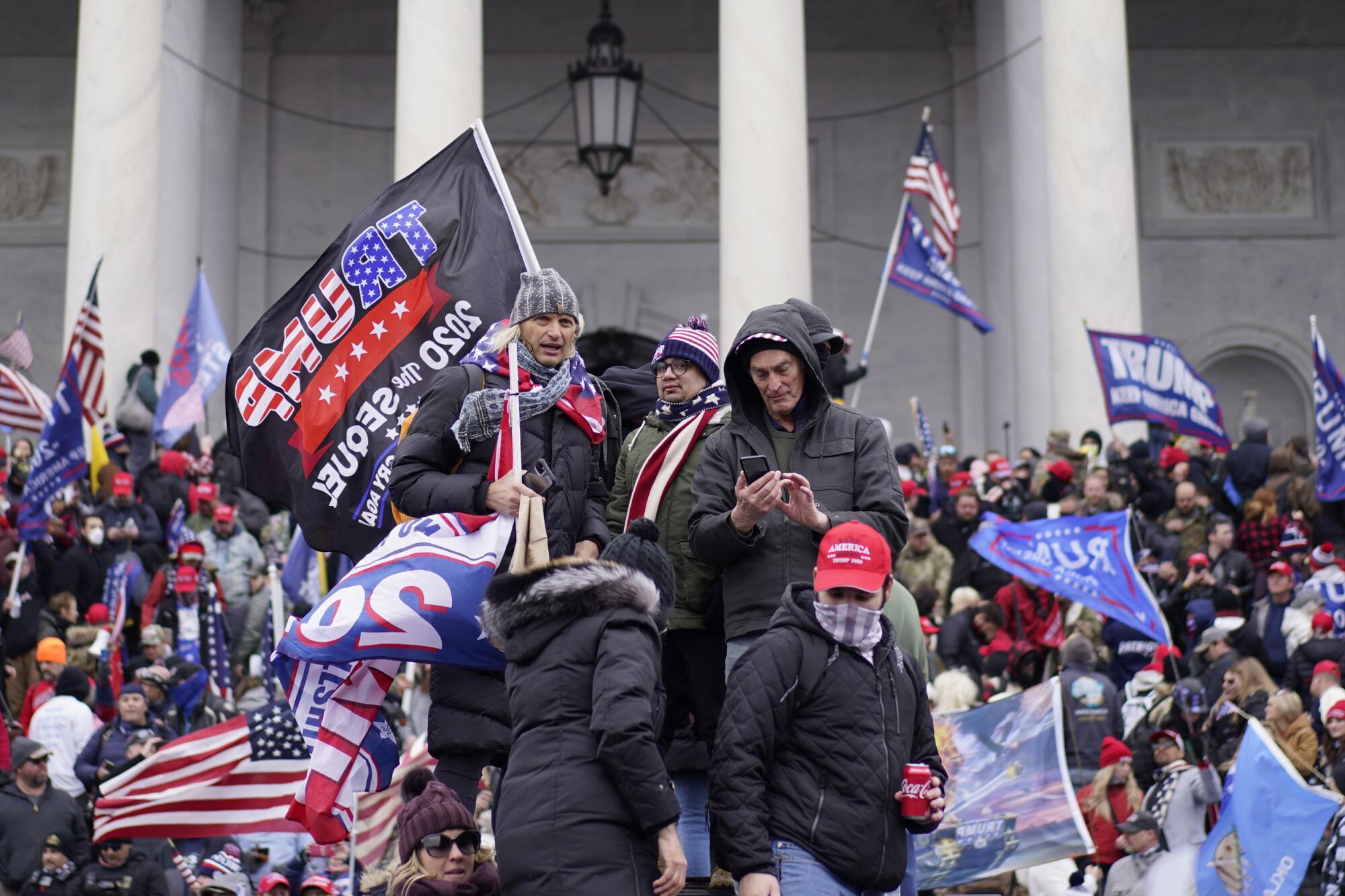
WASHINGTON — The amount of evidence collected as part of the investigation into the Jan. 6, 2021, insurrection rivals what the Hubble telescope has amassed in its three-decade orbit. And sorting through it all has ground many of its criminal cases to a halt.
To speed things along, U.S. attorneys and public defenders have teamed up to create a massive, searchable database to comb through the thousands of social media messages, videos and other evidence produced when the assault on the Capitol was broadcast to the world by journalists, bystanders and the rioters themselves.
“In many, even federal criminal cases you have one notebook of evidence, right? You have maybe 50 to 100 exhibits. In a big white-collar case, you might have several notebooks,” said Loyola Law School professor and former U.S. Atty. Laurie Levenson. “This is astronomically more.”
Some judges are getting antsy about how slow the cases are moving. And some Republican politicians have used the delays to criticize the Biden administration’s handling of the cases, saying it is time to wrap up the investigations and move on, an argument that could get louder if the party regains control of Congress next year.
U.S. attorneys are under immense pressure to successfully prosecute as many of these cases as possible and don’t want to risk defendants getting off on a technicality because they weren’t given all the evidence against them, or worse, evidence that could clear them.
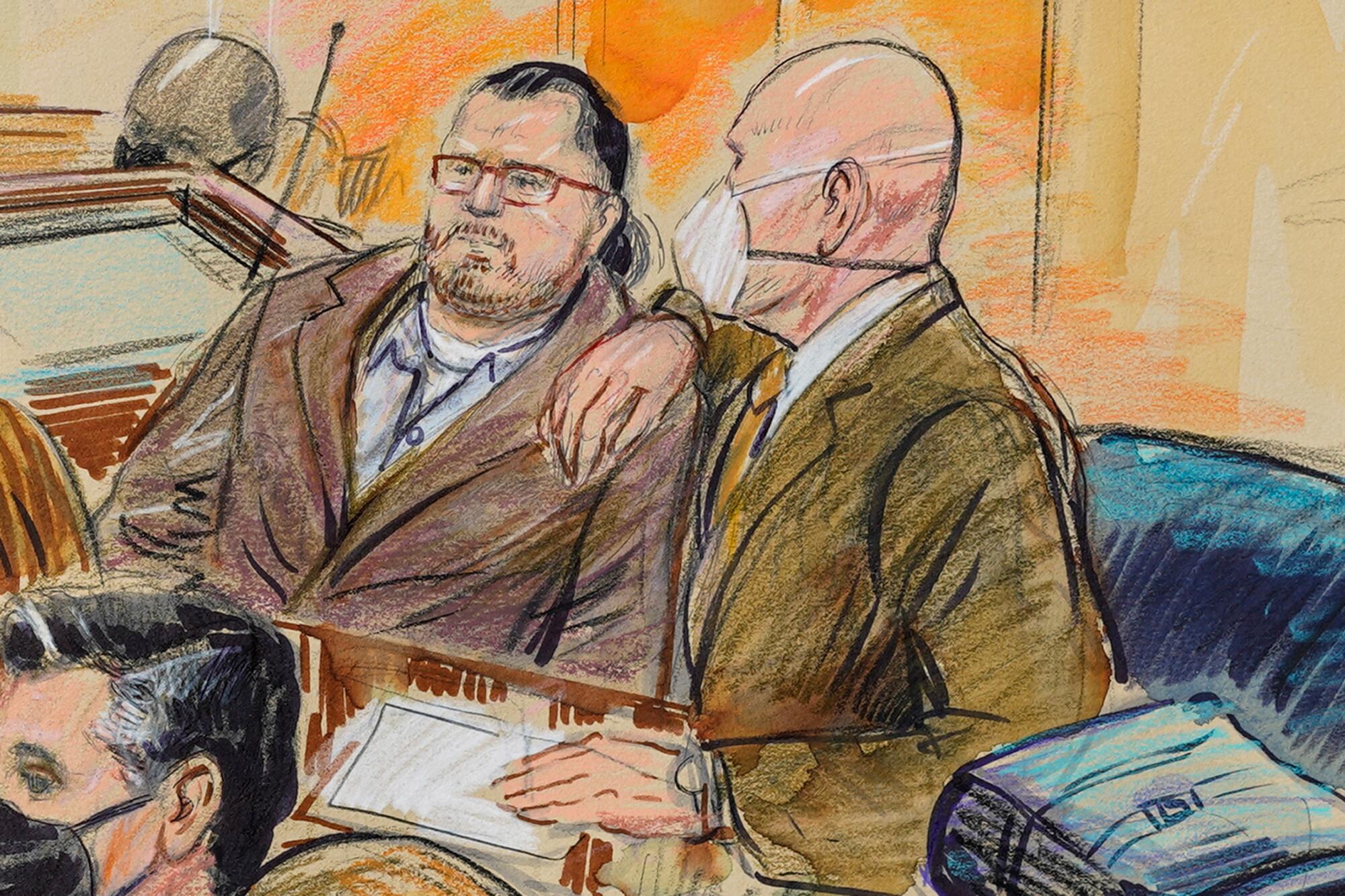
Building a database
At this rate it may take years to prosecute all the cases. The Justice Department continues to announce indictments nearly weekly. And is still trying to identify at least 350 more people.
As a result, 14 months after rioters brawled with police, resulting in several deaths and scores of injuries, caused millions of dollars of damage and disrupted the certification of President Biden’s victory, only one Jan. 6 defendant, Guy Reffitt, has faced a jury. Reffitt, a member of the Texas Three Percenter militia group, was found guilty on all counts Tuesday, including obstruction of an official proceeding and carrying a firearm while being unlawfully on Capitol grounds.
Since so many of the cases touch on one another, Justice Department prosecutors decided the government is obligated to give all relevant information to all defendants and let their attorneys identify information they deem relevant to their specific cases. Many defendants were asking for the same information, and a database meant the government wouldn’t have to repeatedly hand over the same evidence.
In May, the government hired Deloitte Financial Advisory Services to help it construct a searchable repository for both prosecutors and defense attorneys to access.
But, the evidence couldn’t just be thrown into the cloud. Some of the work had to be done by hand.
It had to be sorted in a logical way that allows defendants to find information that might relate to their case.
For example, to help defense attorneys find their clients in the crowd, the government created a GPS spreadsheet of the locations of hundreds of officers during the siege so radio transmissions and body-camera video could be searched by location and time.
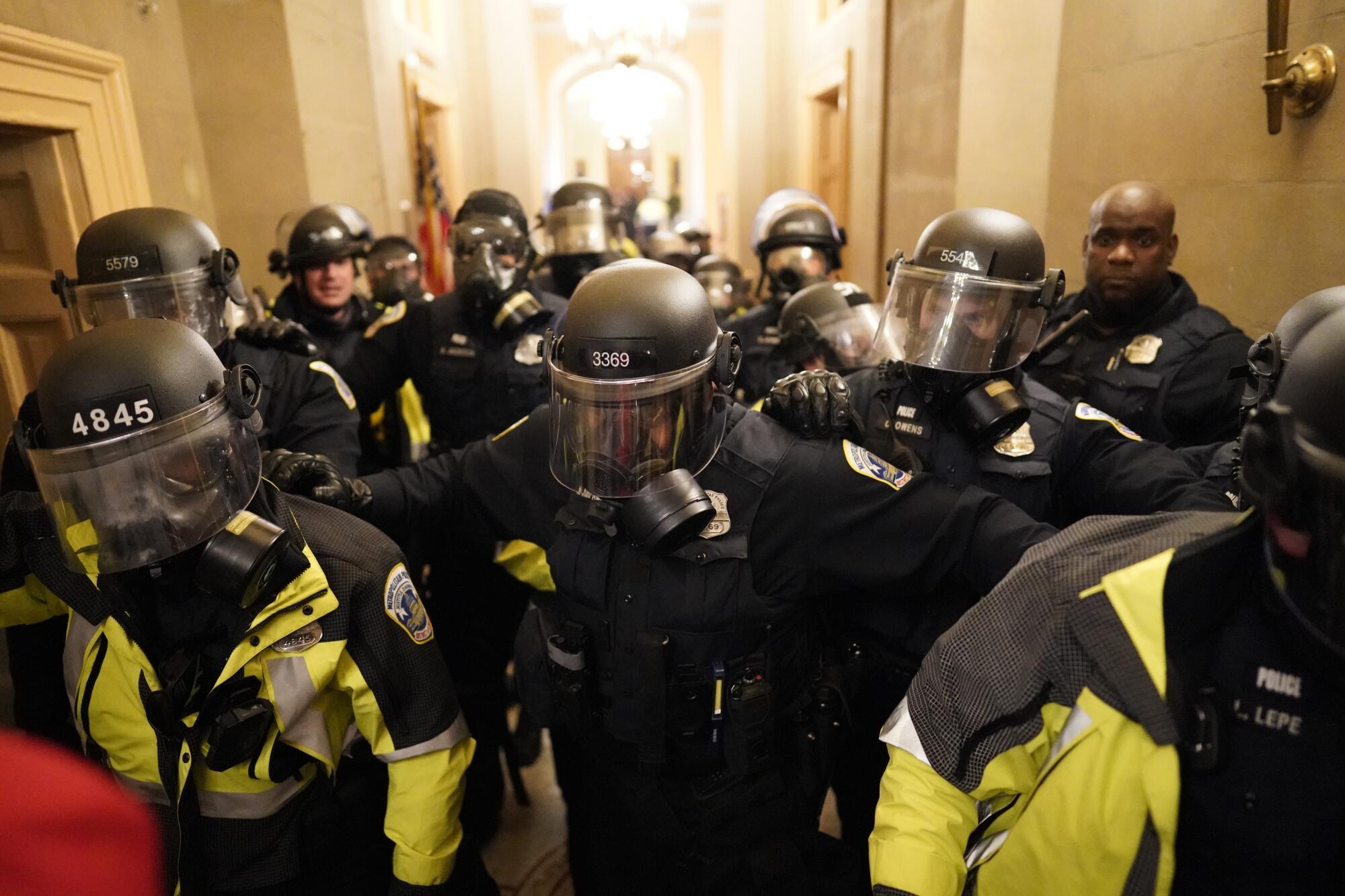
Interviews and depositions conducted by thousands of law enforcement officers in all 50 states who used different recording software had to be formatted so all defense attorneys could access it regardless of the individual software they have.
The U.S. attorney’s office for the District of Columbia declined an interview request about the database and investigation, pointing instead to its Feb. 9 memo on the status of the discovery process that was filed in dozens of cases.
Body-camera video, anonymous tips
According to that memo, the database includes thousands of hours of surveillance video from the U.S. Capitol Police, the Metropolitan Police Department, the U.S. Secret Service and the Senate and House floors. It also includes the body-camera video from officers in the melee, radio transmissions from responding law enforcement agencies, location data for thousands of devices that connected to the Capitol’s cellular network, social media posts and tips, as well as interviews with witnesses, victims and tipsters, and all reports of officer misconduct. Evidence is available to defense attorneys on a rolling basis.
U.S. attorneys are prioritizing the most requested material: video of the House and Senate floors, interviews with 94 police officers and witnesses about improper use of force, 18,484 anonymous tips received by the Metropolitan Police Department and Secret Service files about the whereabouts of Vice President-elect Kamala Harris and Vice President Mike Pence on Jan. 6.
Among other evidence, the department is still working to process more than 900 records of FBI interviews with law enforcement and about 26,000 pages of records from Capitol Police and the Metropolitan Police Department.
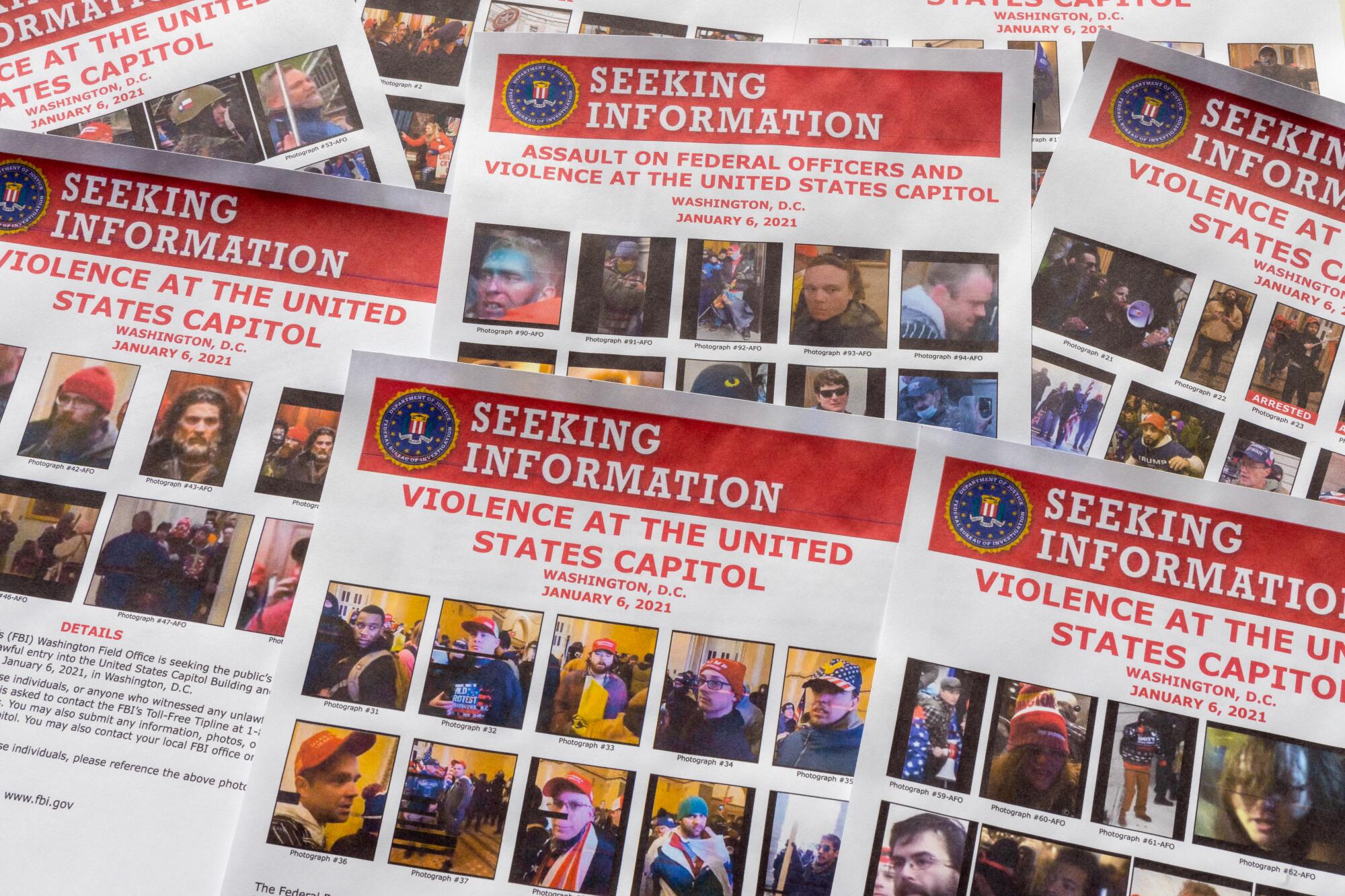
Prosecutors also directly hand over case-specific evidence to defense attorneys, such as hard drives seized during an arrest or evidence with identifying information such as travel records.
U.S. attorneys told judges last year that the Jan. 6 investigation had already resulted in 250 terabytes of data, roughly the equivalent of 32.5 million digital photos or 500,000 hours of audio recordings. NASA’s Hubble has collected 290 terabytes of data in 31 years of operation.
“This is not going to be a document-intensive case like many federal prosecutions are,” said Brandon Fox, former chief of the criminal division of the U.S. attorney’s office for the Central District of California. “This is going to be all about the videos. I have a hard time imagining another prosecution with the sheer amount of videos that are out there.”
Fox said giving the defense access to a fulsome database, and also specifically identifying information that might be relevant to their case, echoes what federal prosecutors have done on other complicated cases with multiple defendants. Fox led the federal prosecution team that brought down former L.A. County Sheriff Lee Baca and 20 others on obstruction of justice and other charges.
“We allowed defense attorneys to have access to that database, but we would separately produce to the defendants things that we thought individually were applicable to them. And so we had the coverage,” he said. “That’s the best thing they can do.”
Still, he noted that such measures won’t stop defendants from arguing that finding evidence in the database that can clear them is like finding “a needle in a haystack.”
Defendants anxious to get to court might be hoping the government misses handing over a key piece of evidence, something that could cause a conviction to be overturned, he said.
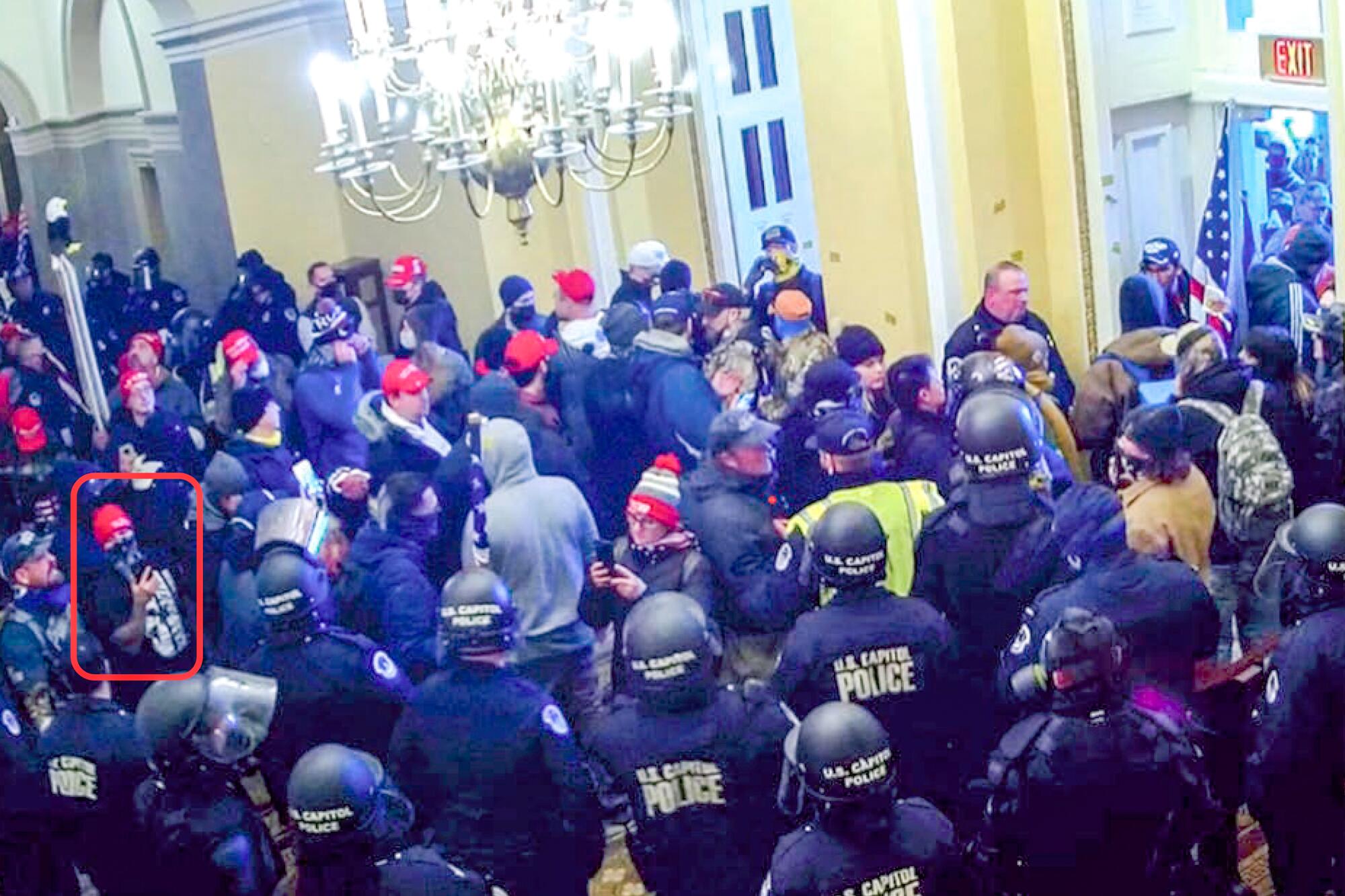
According to the George Washington University Program on Extremism, the government has brought 757 cases against people for crimes around Jan. 6, including 51 Californians. Of those, 225 have pleaded guilty. The remaining defendants are largely in a holding pattern. Most of the approximately 65 who are in federal custody are accused of assaulting police officers.
Federal law requires trials to begin within 70 days of indictment or the defense can request the charges be dismissed. Fox said it is extremely rare for a case to be dismissed for a Speedy Trial Act violation. Judges often stop the clock, as they have in nearly every Jan. 6 case, for “good cause.”
The right to a speedy trial
That has some defendants, particularly those who are in custody, exasperated by how long the process is taking.
Californian Daniel Rodriguez, who has been in jail since March 31, 2021, has repeatedly pushed for a trial date to be set. His attorney Rebecca Levy said in court that they essentially have the evidence needed to move to trial. Rodriguez is accused of trying to break a window, brawling with police and repeatedly shocking Metropolitan Police Officer Michael Fanone with a stun gun. Fanone had a heart attack.
In a court proceeding in August, Levy said she was concerned about her client’s speedy-trial rights, adding, “We have been patient thus far, but I am concerned about waiting for this database to go online because I’m getting some conflicting information about when exactly all of it would be uploaded.” She declined to comment for this story.
U.S. District Judge Amy Berman Jackson denied Levy’s request to set a trial date and kept the clock paused, saying the Justice Department was making a good-faith effort to produce evidence. Rodriguez remains in a Washington, D.C., jail.
Levy again raised the evidence delays at Rodriguez’s March 3 status hearing. That time Jackson allowed the clock to run for two weeks and said she’s holding time on her calendar open in the hope the case can go to trial by August.
Other defendants out on bond seem willing to give the Justice Department time to organize the evidence for them.
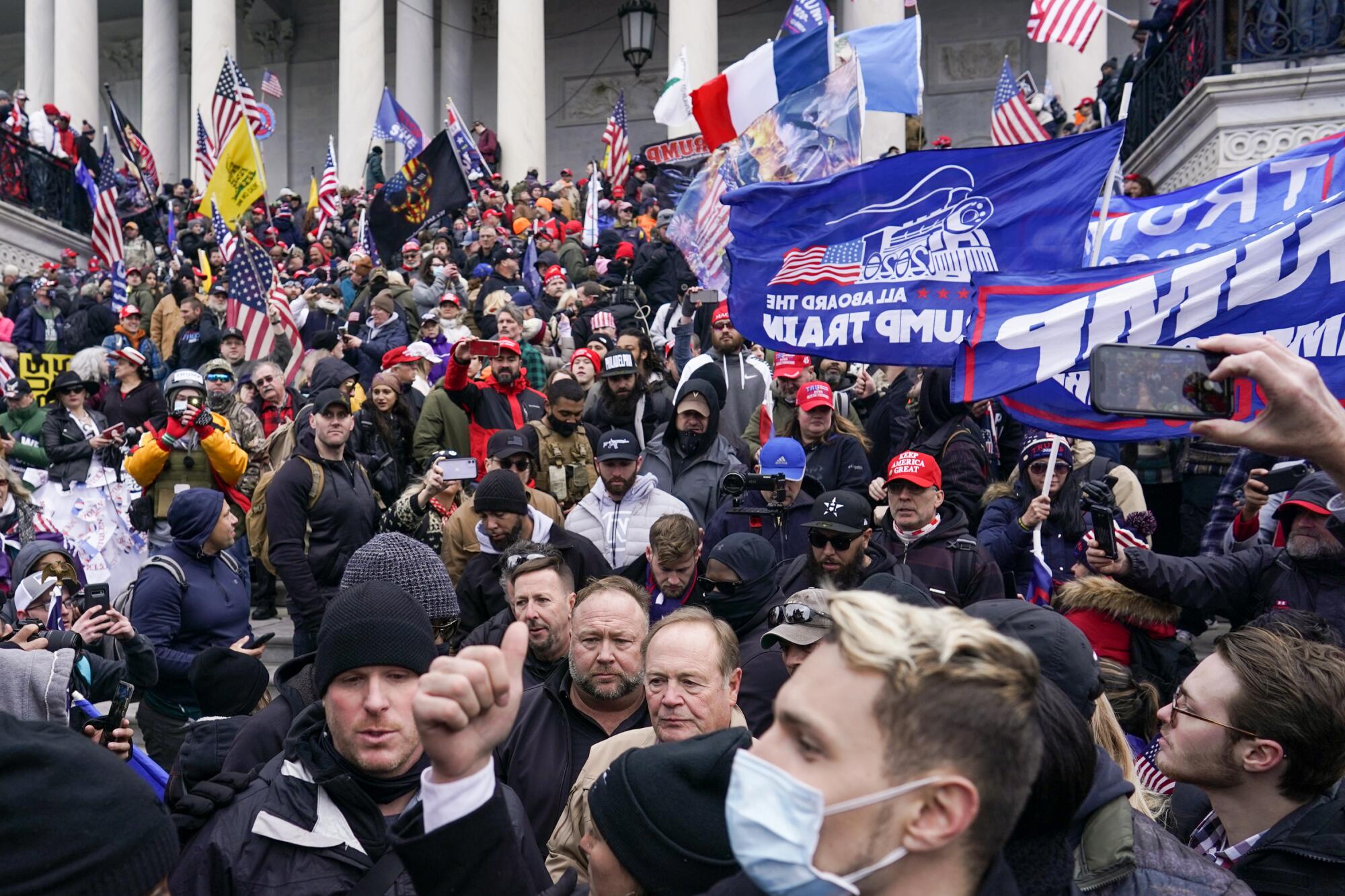
Los Angeles-based attorney Tigran Martinian, who represents Rodriguez’s codefendant Edward Badalian, has not been pushing to go to trial.
“It is what it is. There is not much we can do about” the wait, Martinian told The Times.
Badalian, who was charged in November with conspiracy, obstruction of an official proceeding and aiding and abetting, and tampering with documents, is out of custody on bond. A third unnamed defendant fled the country, which is contributing to the delay, according to prosecutors.
Martinian said that although being on bond adds restrictions to his client’s life, there is also a benefit.
“The problem as a defense lawyer is you want to put up the best possible defense, and putting up the best possible defense on a complicated case like this takes time,” he said.
Some defendants might be waiting to see how strong the government’s evidence is against them before deciding whether to seek a plea deal or push to speed up their trial, Loyola’s Levenson said.
Meanwhile, new evidence is being added to the database. Hundreds of thousands of records were sent to DeLoitte on Feb. 7. U.S. attorneys didn’t provide a firm deadline in the memo for when the evidence will be available.
Once the database is complete, the process is really just beginning, Levenson cautioned.
Individual federal cases often take years, she said. Convoluted cases like those arising from Jan. 6 are in a class of their own.
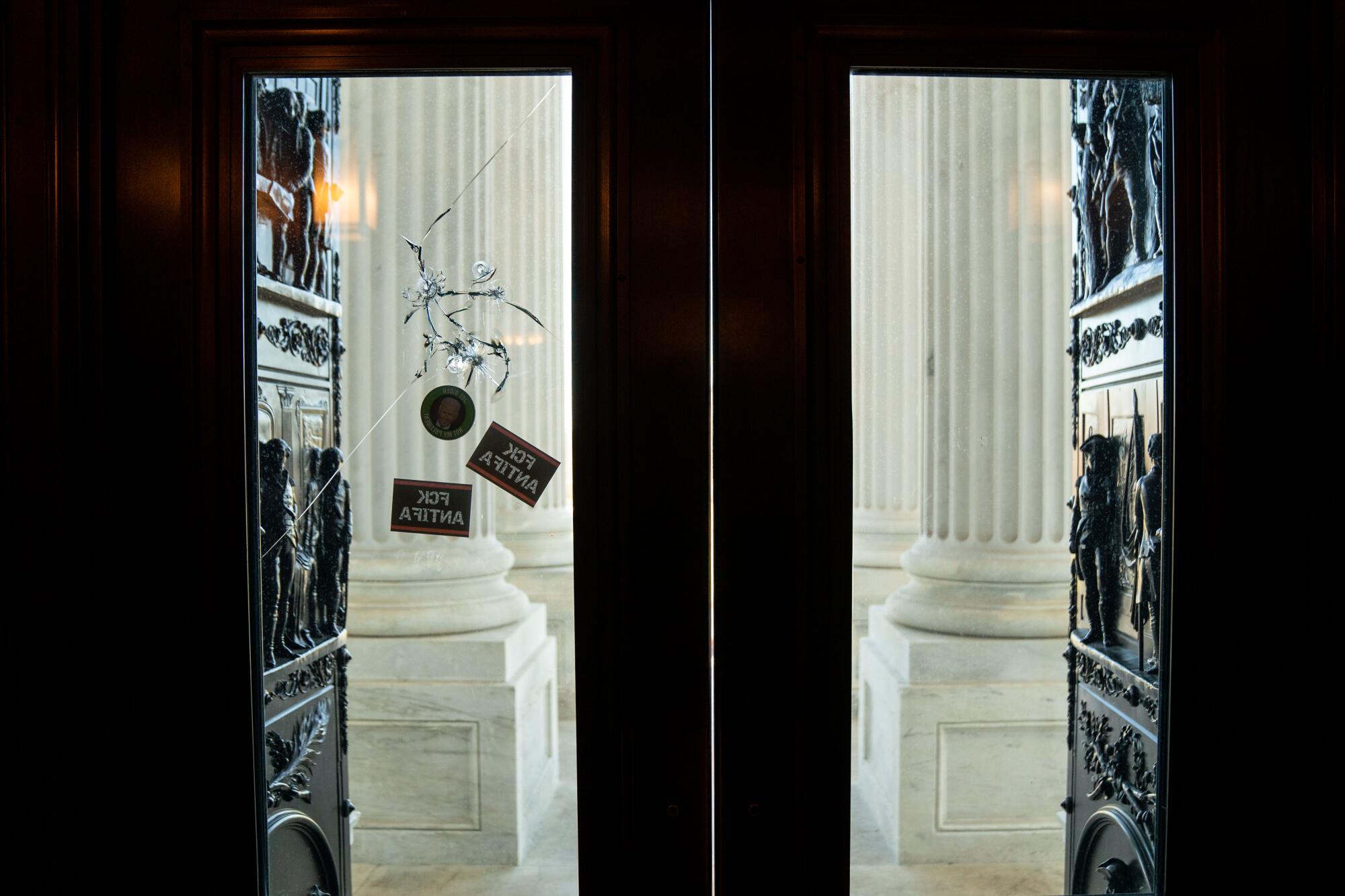
More to Read
Get the L.A. Times Politics newsletter
Deeply reported insights into legislation, politics and policy from Sacramento, Washington and beyond. In your inbox three times per week.
You may occasionally receive promotional content from the Los Angeles Times.











